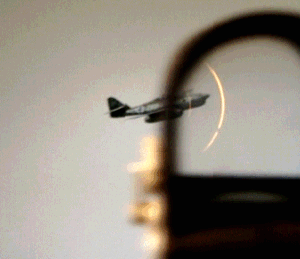
The interesting thing is that reflex sights are really not particularly new or cutting edge. Built on the optical principle that a point at the focus of a curved lens will appear to the viewer at infinity, the first patent on this type of reflector sight was registered in 1900 by telescope designer Howard Grubb.
Fighter aircrafts have used reflex sights in one form or another starting as early as 1918. The advantage you gain from a reflex sight is obvious immediately upon the first use, chiefly the simplicity.
Fighter pilots, in specific, could use this highly accurate sighting tech while flying a plane… during a dogfight. That speaks volumes in itself.
[COUPON: Get the MCG Reflex Sight 50% OFF]
A major advantage to this type of optic, versus other conventional sights, is that it eliminates the margin for error while making aiming much quicker and simpler. Since the aim point displays at the same exact spot regardless of the shooter’s eye position, getting your eye lined up precisely with an iron sight or scope tube isn’t necessary.
In addition, reflex users won’t have their field of view limited by a scope tube. In fact, many shooters use reflex sights with both eyes open. Cross-dominant eye shooters typically find reflex sights to be ideal.
